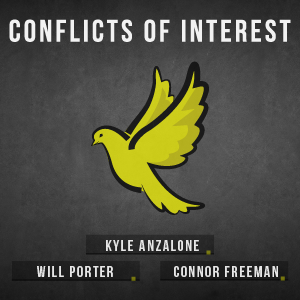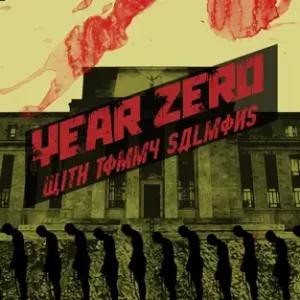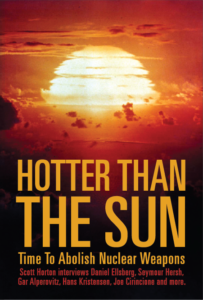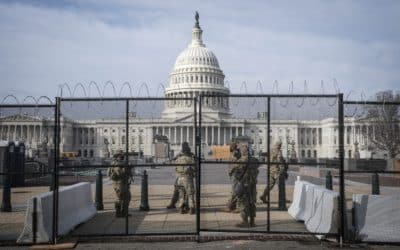Donald Trump, who returned to the White House on a promise to end the Russo-Ukrainian War, has recently expressed his frustration at how the conflict has played out thus far.
In a viral Truth Social post he published on May 25, 2025, Trump manifested his bewilderment over Russian President Vladimir Putin’s latest campaign to ratchet up bombing campaigns across Ukraine.
Trump’s complaints about Russia’s behavior belies a deeper reality: the conflict’s resolution will be forged through combat, not compromise. The president’s remarks reflect a disjointed foreign policy. Despite his calls for peace and his professed desire to mediate the Russo-Ukrainian conflict, the Trump administration’s actions in 2025 have not matched the rhetoric of de-escalation.
It’s ultimately the actions, not the rhetoric that counts. The United States continues to supply military aid, intelligence, and logistical support to Ukraine, despite all the talk coming from Trump about ending this conflict. The United States refuses to recognize any Russian sphere of influence in Eastern Europe or to accommodate Moscow’s broader security concerns, a position that has become a major obstacle to any meaningful peace settlement.
Further, recent Ukrainian drone attacks on Russian airfields mark a significant escalation in the conflict. On June 1, the Security Service of Ukraine (SBU) launched 117 drones deep into Russian territory, targeting military aircraft at five separate military bases. The operation, dubbed “Spider’s Web,” reportedly destroyed or severely damaged dozens of aircraft, including several critical A-50 airborne early warning and control aircraft and nuclear-capable bombers.
These attacks exposed vulnerabilities in Russia’s strategic deterrent and demonstrated Ukraine’s growing capacity for long-range, high-impact strikes. The use of inexpensive, commercially available drones—often re-purposed for military objectives—has fundamentally altered the nature of the battlefield. That said, such attacks are largely facilitated by the top-notch intelligence that the United States and its NATO allies provide to Ukraine. Though framed as an independent defender against Russian might, Ukraine effectively operates as a NATO proxy, sustained by extensive Western military aid and intelligence.
Moscow’s response to these attacks has been predictably bellicose. Russian officials have accused the United States and United Kingdom of complicity, warning that all military options are “on the table” and calling for Western restraint to prevent further escalation. The Kremlin’s rhetoric suggests that it will not passively accept these provocations and is prepared to continue its “special military operation” until it achieves all its objectives, which could include the pacification and occupation of large swathes of eastern Ukraine.
The prospects for a diplomatic settlement remain bleak. At recent peace talks in Istanbul, Russia demanded that Ukraine cede significant territory and accept strict limits on its military, terms that Kiev flatly rejected as tantamount to capitulation. Ukraine, for its part, insists on the restoration of its territorial integrity and refuses to recognize any Russian claims over occupied regions.
The United States and its allies, meanwhile, have shown little willingness to pressure Ukraine into concessions or to acknowledge Russia’s security interests. Instead, many in Washington continue to frame the conflict as a test of the international order and the principle that sovereign nations are free to choose their alliances. This represents a direct challenge to Moscow’s demand for a buffer zone and a rollback of NATO’s eastward expansion.
Decades of NATO enlargement, broken promises, and repeated Western meddling in Russia’s traditional sphere of influence have left the Kremlin deeply distrustful of any Western-led negotiation process. Putin and his advisers are increasingly convinced that only a military victory can guarantee Russia’s security and prevent further encroachment by the collective West in Russia’s backyard.
Given these dynamics, the war is likely to be settled on the battlefield. Russia’s recent military advances, coupled with its willingness to absorb heavy losses and escalate attacks on Ukrainian infrastructure, suggest that Moscow is determined to achieve its objectives through force rather than compromise.
The Ukrainian side, emboldened by Western support and recent successes in drone warfare, is equally committed to resisting Russian aggression and reclaiming lost territory. The influx of advanced weaponry, intelligence, and logistical support from the United States, United Kingdom, and other allies has enabled Ukraine to sustain its defense and even strike deep into Russian territory.
As both sides double down on maximalist positions, the conflict has entered a phase of attrition and escalation, with each new battlefield innovation raising the stakes and making a negotiated settlement even more elusive. By virtue of Russia’s larger economy and vast firepower advantage, Russia is on track to not only defeating Ukraine on the battlefield, but also drastically changing its borders should the West continue to use Ukraine as a proxy force against Russia.
For Russia, the cumulative effect of decades of perceived Western betrayal, NATO expansion, and the refusal of the U.S. to acknowledge its security interests has created a situation in which retreat is politically and strategically infeasible. The Kremlin views the conflict as existential, and its willingness to escalate—including the threat of using its nuclear arsenal—underscores its commitment to see the war through, no matter the cost.
Recent drone strikes against Russia’s strategic bomber fleet have only reinforced Moscow’s determination not to allow itself to be bullied or humiliated by the United States and its underlings. So long as Washington pursues primacy and refuses to accommodate Russian interests, Moscow will see little value in negotiation and will continue to seek a decisive military solution.
In sum, the Russia-Ukraine conflict is unlikely to be resolved at the negotiating table as long as the United States maintains its quest for global hegemony. The outsourcing of the war to allies and private contractors, the escalation of drone warfare, and the entrenched maximalist positions on both sides have created a situation in which only military force can determine the outcome.
Russia, pushed to the brink by decades of Western encroachment and repeated diplomatic betrayals, is prepared to escalate the conflict until its objectives are met or the Ukrainian military collapses. Ukraine, backed by Western support and emboldened by recent tactics successes, will continue to resist, consequences be damned.
So long as the United States seeks dominance and Russia remains capable, war—not diplomacy—will shape Ukraine’s future. The conflict shows no sign of abating, with peace distant and continued suffering certain.
































